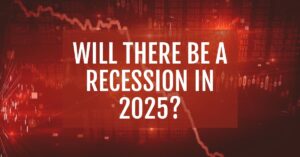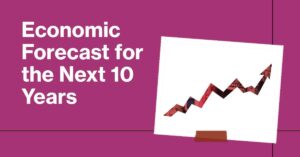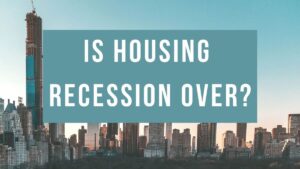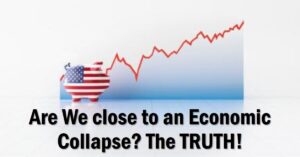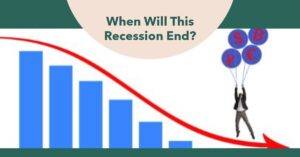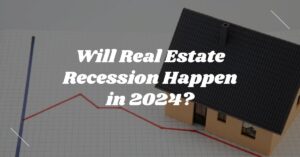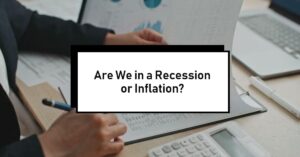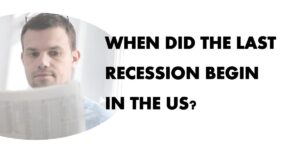The US economy has been growing steadily since the end of the last recession in 2020, but some analysts and investors are worried that the good times may not last much longer. With inflation rising, interest rates increasing, and some economic indicators flashing red, many are wondering if the US is heading for another recession in the near future.
A recession is generally defined as two consecutive quarters of negative growth in gross domestic product (GDP), which measures the total value of goods and services produced in a country. However, the official arbiter of US recessions is the National Bureau of Economic Research (NBER), which uses a broader set of criteria to determine when a recession begins and ends.
NBER's Definition of a Recession
According to the NBER, a recession is “a significant decline in economic activity that is spread across the economy and that lasts more than a few months.” The NBER considers various factors, such as employment, income, industrial production, and retail sales, to identify peaks and troughs in the business cycle.
The last recession in the US lasted from February 2020 to April 2020, according to the NBER, making it the shortest on record. It was also one of the deepest, as the COVID-19 pandemic and lockdowns caused a sharp contraction in economic activity and a surge in unemployment.
Since then, the US economy has rebounded strongly, thanks to massive fiscal and monetary stimulus, widespread vaccinations, and pent-up consumer demand. GDP grew at an annual rate of 6.7% in the second quarter of 2021, and is expected to grow at around 5% in the third quarter, according to the Atlanta Fed's GDPNow model.
Challenges for the US Economy
However, some challenges remain for the US economy. Inflation has been running above the Federal Reserve's 2% target for several months, reaching 5.4% in September 2021, the highest level since 2008. The Fed has attributed this to temporary factors, such as supply chain disruptions, labor shortages, and base effects, and expects inflation to moderate in 2022.
However, some economists and market participants are concerned that inflation may prove to be more persistent and widespread than anticipated, forcing the Fed to raise interest rates sooner and faster than expected. Higher interest rates could dampen consumer spending, business investment, and housing activity, and increase the cost of servicing debt.
Will There Be a Recession in the US in 2025?
Yield Curve Inversion
Another indicator that has raised recession fears is the yield curve inversion. The yield curve is a graph that shows the relationship between interest rates and bond maturities. Normally, longer-term bonds have higher yields than shorter-term bonds, reflecting higher risk and inflation expectations. However, sometimes the yield curve can invert, meaning that shorter-term bonds have higher yields than longer-term bonds.
An inverted yield curve is often seen as a sign of an impending recession, as it suggests that investors expect lower growth and inflation in the future. Historically, every US recession since 1950 has been preceded by an inverted yield curve.
The yield curve inverted briefly in August 2019 and March 2020, but then normalized as the Fed cut interest rates to near zero and launched massive bond-buying programs to support the economy during the pandemic. However, according to Credit Suisse's chief US equity strategist Jonathan Golub, the Treasury futures market suggests that the yield curve will invert again in 2024 and remain inverted until 2026.
Based on historical data, Golub predicted that a recession would hit the US in August 2025, lasting until February 2026. He also estimated that the S&P 500 will peak in July 2024 at around 5,800 points, before falling by about 20% during the recession.
Debates on Yield Curve Inversion
However, not everyone agrees with this gloomy outlook. Some economists argue that the yield curve inversion may not be as reliable as a recession predictor as it used to be, due to structural changes in the global economy and financial markets. For example, some factors that may distort the yield curve include:
- The Fed's large-scale asset purchases (also known as quantitative easing or QE), which lower long-term bond yields by increasing demand.
- The global savings glut, which reflects excess savings over investment in many countries, especially China and Germany. This creates downward pressure on global interest rates and drives investors to seek higher returns in US bonds.
- The low or negative interest rates in many developed countries,
- The flight to safety effect, which occurs when investors flock to US Treasuries as a safe haven during times of geopolitical or financial turmoil.
- The term premium effect, which measures how much extra return investors demand for holding long-term bonds over short-term bonds. This premium has declined over time due to lower inflation volatility and increased demand for long-term bonds from institutional investors such as pension funds and insurance companies.
These factors may make the yield curve less responsive to changes in growth and inflation expectations than in the past, and more influenced by global market forces and policy actions. Therefore, an inverted yield curve may not necessarily signal a looming recession, but rather reflect other dynamics that affect bond yields.
Optimism for the US Economy
Another reason to be optimistic about the US economy is the strength of consumer spending, which accounts for about 70% of GDP. Consumer confidence has remained high despite the inflation and interest rate pressures, as households have benefited from higher incomes, lower taxes, and accumulated savings during the pandemic.
Moreover, consumer spending is expected to get a boost from the $1.9 trillion American Rescue Plan Act, which was enacted in March 2021 and provided direct payments, enhanced unemployment benefits, and other relief measures to millions of Americans.
The Biden administration is also pushing for two more spending packages: the $1.2 trillion bipartisan infrastructure bill, which has passed the Senate and awaits a vote in the House, and the $3.5 trillion budget reconciliation bill, which includes spending on social programs, climate change, and health care.
These fiscal stimulus measures could help sustain economic growth and job creation in the coming years, as well as address some of the long-term challenges facing the US economy, such as aging infrastructure, income inequality, and environmental degradation. However, they could also add to the inflation and debt pressures that may constrain the Fed's ability to respond to a potential downturn.
Conclusion
In conclusion, the US economy faces a mix of opportunities and risks in the near future. While GDP growth has been strong and consumer spending has been resilient, inflation and interest rates have risen and some economic indicators have signaled a possible recession.
The yield curve inversion is one of the most reliable recession predictors, but it may not be as accurate as it used to be due to structural changes in the global economy and financial markets. The fiscal stimulus measures could boost economic growth and address some long-term challenges, but they could also increase inflation and debt burdens. Therefore, investors should be prepared for both scenarios and diversify their portfolios accordingly.
